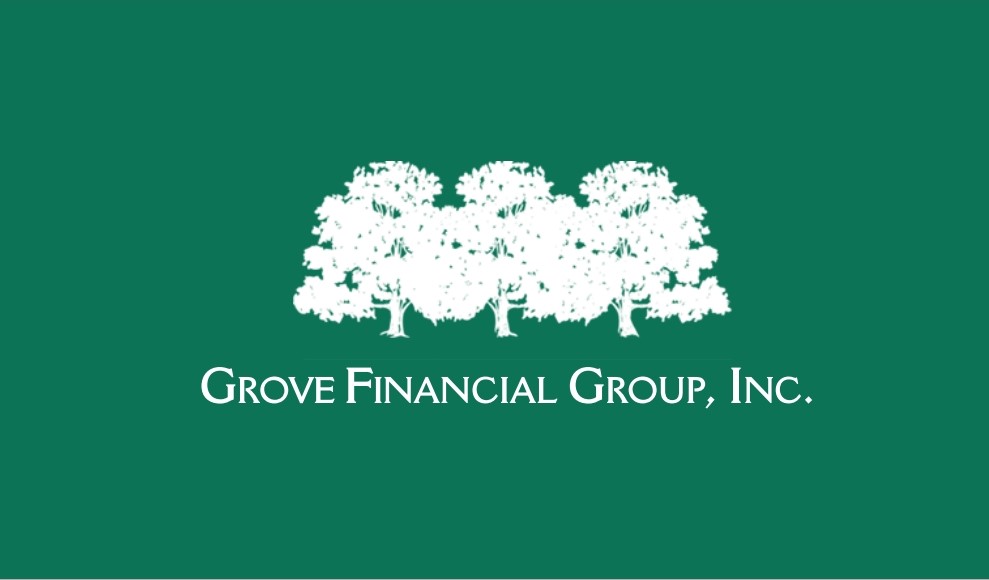- July 9, 2025
- by Leon Grove
- Finance, Life Insurance, Long-term Care, News, Pension Integration, Retirement Planning
The Four Pillars of Authentic Wealth: Legacy - Moving Beyond Accumulation to Focus on Lasting Impact
The Millionaire’s Paradox: Why Having More Doesn’t Equal Meaning More
Here’s a truth that might surprise you: I’ve worked with millionaires who feel poorer than they did when they were struggling to pay rent.
Not financially poorer—emotionally and spiritually poorer.
They’ve mastered the art of accumulation but missed the essence of true wealth. They’ve built impressive portfolios but forgotten why they started building in the first place. They’ve won the money game but lost sight of what winning actually means.
If you’ve ever felt like your financial success is somehow hollow, you’re not alone. And you’re definitely not ungrateful. You’ve simply discovered what ancient wisdom has always taught: wealth without purpose is just organized poverty.
This brings us to the fourth and most transformative pillar of authentic wealth: Legacy.
What Legacy Really Means (Hint: It’s Not Just About Estate Planning)
When most people hear “legacy,” they think estate planning. Wills, trusts, and who gets what when you’re gone. But that’s just the mechanical side of legacy—the “what” without the “why.”
True legacy is about the lasting impact you create while you’re alive to see it flourish.
Legacy isn’t something that happens after you die; it’s something you build, nurture, and witness every day you’re breathing. It’s the difference between:
- Leaving money vs. leaving meaning
- Transferring assets vs. transferring values
- Creating inheritance vs. creating influence
Consider these two approaches:
Traditional Wealth Transfer: “I’m leaving my children $2 million so they’ll be financially secure.”
Legacy-Focused Wealth Transfer: “I’m teaching my children how to create value, think strategically, and use resources to make a positive impact—and providing them with the tools to do so at scale.”
The first creates dependence. The second creates capability.
The Three Dimensions of Lasting Legacy
- Values Legacy: The Foundation of Everything
Your values legacy is the belief system, principles, and worldview you pass on. It’s the answer to: “What do you stand for?”
Real-World Example: Warren Buffett’s legacy isn’t just his investment acumen—it’s his philosophy of long-term thinking, ethical business practices, and using wealth as a tool for societal good. His children didn’t just inherit money; they inherited a framework for making decisions that create value beyond themselves.
How to Build Your Values Legacy:
- Document your core beliefs and the stories behind them
- Create regular family discussions about values in action
- Make financial decisions that align with your stated values
- Share the “why” behind your choices, not just the “what”
- Knowledge Legacy: Wisdom That Compounds
Your knowledge legacy is the skills, insights, and wisdom you transfer. It’s the answer to: “What do you know that others need to learn?”
Real-World Example: A client of mine, a successful business owner, realized his greatest asset wasn’t his company—it was his ability to identify opportunities, build relationships, and recover from setbacks. Instead of just leaving his business to his son, he spent five years teaching him these skills through regular mentoring sessions, joint ventures, and carefully structured challenges.
How to Build Your Knowledge Legacy:
- Create a “wisdom journal” documenting key lessons learned
- Establish regular mentoring relationships with family members
- Share your decision-making process, not just your decisions
- Create educational experiences that teach principles, not just facts
- Impact Legacy: Your Ripple Effect
Your impact legacy is the positive change you create in the world. It’s the answer to: “How is the world better because you were in it?”
Real-World Example: Instead of just donating money to charity, a physician client created a scholarship program that fully funds medical school for students from underserved communities—with the requirement that they practice in those communities for five years after graduation. Her money creates doctors, who create health, who create opportunity, who create more doctors. That’s compound impact.
How to Build Your Impact Legacy:
- Identify problems you’re uniquely positioned to solve
- Create systems that continue working without your direct involvement
- Partner with others to amplify your impact
- Measure outcomes, not just outputs
The Legacy Planning Framework: From Concept to Reality
Step 1: Define Your Legacy Vision
Ask yourself:
- What do you want to be remembered for?
- What problems do you want to help solve?
- What would you regret not doing with your wealth?
- How do you want your family to talk about you in 50 years?
Write a one-page “legacy statement” that captures your vision.
Step 2: Align Your Resources
Traditional financial planning asks: “How much do you need to retire?” Legacy planning asks: “How much do you need to live your values at scale?”
Resource Alignment Exercise:
- List your current assets and income streams
- Calculate your true lifestyle costs (what you actually need vs. want)
- Identify your “legacy surplus” (resources available for impact)
- Create a plan to optimize this surplus for maximum impact
Step 3: Create Legacy Vehicles
For Values Legacy:
- Family mission statements
- Regular family meetings with structured discussions
- Shared experiences that reinforce values
- Mentoring relationships within and outside your family
For Knowledge Legacy:
- Documented processes and decision frameworks
- Educational funding with performance requirements
- Business partnerships that transfer skills
- Formal or informal teaching roles
For Impact Legacy:
- Charitable giving with measurable outcomes
- Social enterprises that address specific problems
- Scholarship or grant programs with clear criteria
- Community initiatives that create lasting change
Step 4: Implement and Iterate
Legacy building is not a “set it and forget it” process. It requires:
- Regular review and adjustment
- Feedback from beneficiaries
- Measurement of impact
- Adaptation as circumstances change
The Compound Effect of Legacy Thinking
Here’s what happens when you shift from accumulation to legacy:
Your Decision-Making Improves: Instead of asking “Will this make me money?” you ask “Will this create lasting value?”
Your Relationships Deepen: Instead of transactional interactions, you create meaningful connections based on shared values and mutual growth.
Your Stress Decreases: Instead of worrying about having “enough,” you focus on using what you have effectively.
Your Fulfillment Increases: Instead of chasing the next milestone, you find meaning in the impact you’re creating today.
Your Wealth Grows: Paradoxically, when you focus on creating value for others, financial returns often follow.
Three Legacy Actions You Can Take This Week
- The Legacy Letter Exercise
Write a letter to your family (or future family) explaining:
- What you learned from your financial journey
- What you hope they’ll learn from their own
- How you want your wealth to be used
- What you want to be remembered for
Don’t just put it in a safe—share it with them now.
- The Skills Transfer Audit
List your three most valuable skills or insights. For each one:
- Who in your life could benefit from learning it?
- What’s the best way to teach it?
- How can you create opportunities for them to practice it?
Start with one skill and one person this month.
- The Impact Investment
Identify one problem you care about solving. Research three organizations or initiatives addressing that problem. Instead of just donating money, invest time in understanding their approach and offer your expertise alongside financial support.
The Legacy Imperative: Why This Matters More Than Ever
We’re living through a historic wealth transfer. Over the next 20 years, baby boomers will transfer an estimated $68 trillion to their heirs and charities. But here’s the challenge: studies show that 70% of wealthy families lose their wealth by the second generation, and 90% lose it by the third.
The problem isn’t poor investment returns—it’s poor values transfer.
Families that maintain wealth across generations don’t just pass down money; they pass down purpose, principles, and the skills to create value. They understand that true wealth isn’t what you accumulate—it’s what you activate.
Your legacy isn’t what you leave behind—it’s what you build forward.
The Four Pillars Working Together
Legacy doesn’t exist in isolation. It’s the culmination of the other three pillars:
- Protection ensures your legacy resources are preserved
- Growth provides the resources needed to create meaningful impact
- Optimization maximizes the effectiveness of your legacy efforts
- Legacy gives purpose and direction to everything else
When these four pillars work together, they create something remarkable: authentic wealth—wealth that serves not just your financial goals but your human ones.
Your Legacy Starts Now
The best time to start building your legacy was 20 years ago. The second-best time is today.
Legacy isn’t about perfection—it’s about intention. It’s not about having all the answers—it’s about asking the right questions. It’s not about the size of your bank account—it’s about the size of your impact.
Every day you wait to start building your legacy is a day of potential impact lost. Every dollar you spend without considering its legacy potential is a dollar that could have created lasting change.
Your wealth is temporary. Your legacy is eternal.
What legacy are you building? Share your thoughts in the comments below, or reach out to discuss how to align your financial strategy with your legacy vision.
If this resonated with you, share it with someone who might benefit from thinking differently about wealth and purpose.
Ready to move beyond accumulation to authentic wealth? Let’s explore how the Four Pillars can transform your financial future.
#WealthBuilding #FinancialPlanning #enhancedplanning #estateplanning #legacyplanning




